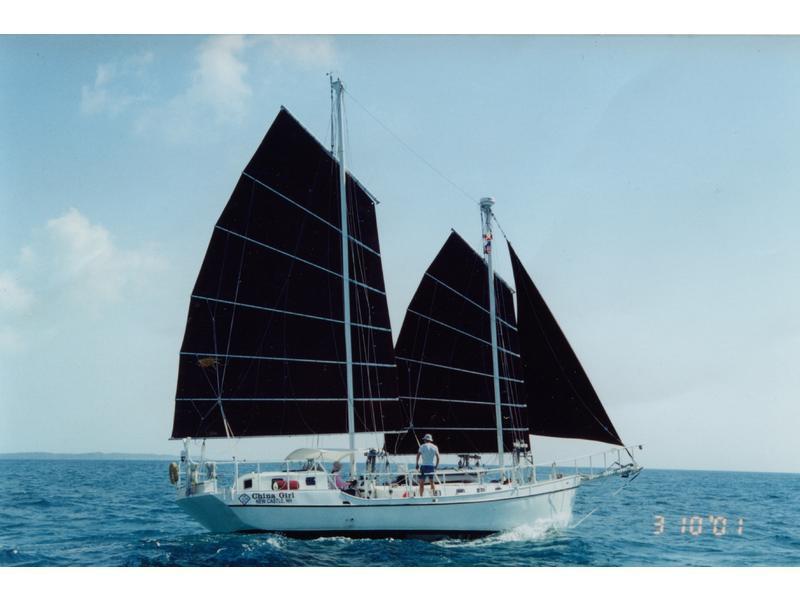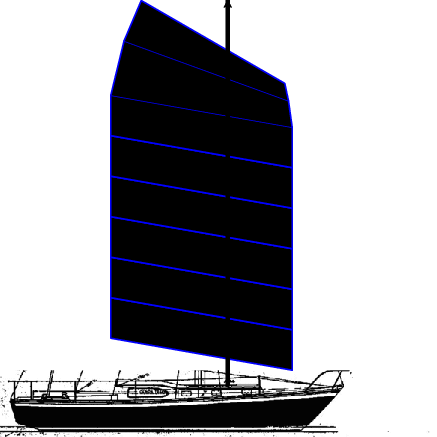Split Junk - Part 1 (Background)
Being Part 1 of the Split Junk Trilogy. This part discusses the Split Junk Rig and why I'm excited about it. Part 2 will discuss my test build. Part 3 will discuss some particulars about sail panel design and construction.
Junk What?I'm a junkie. How the obsession got started I honestly can't remember, but I suspect either Joshua Slocum, Thomas Colvin, or Roger Taylor are to blame.
For the unitiated, the junk rig was historically the predominant style of sail in China and many other parts of Asia. It is rugged, easy to handle single-handedly, and can be constructed inexpensively. It was re-popularized (to use the term loosely) in the 1960's by Blondie Hasler on his single-handed Trans-Atlantic yacht Jester.

Most Westernized junk rigs look something along the lines of Jester (above) or Gazelle (below). The rig in that format has many virtues, but arguably one vice: given they are cut flat, they don't develop much lift and therefore aren't the best upwind sails. They also have a lot of running rigging, which some people don't care for.

The fine folks at the Junk Rig Association have tried many different designs to improve windward performance of the junk rig: my personal favorite being the Split Junk, developed by Slieve McGalliard. I came across the Split Junk rig on Proafile and immediately thought "I MUST HAVE THIS".

There are several things to like about the Split Junk. The sails are cambered, which allows them to form an airfoil shape and develop lift (like an airplane wing) as opposed to the flat-cut sails previously common. Now cambered panels have been tried before (some quite successfully). What Slieve added (which I think is brilliant) is the addition of the "jibs" on the foreward side of the mast. The jib panels can generate more lift both because of their camber and because they are positioned in front of the mast are not subject to the turbulence created as air flows around the mast. The split between the jib and main panels creates a slot which is analagous to the interaction between a normal jib and mainsail. The sail area in front of the mast creates a counterbalance reducing the amount of force which must be applied to the mainsheet. It also allows the mast to be placed farther aft for the same sail area.
The design impressed me right away, and reading Slieve's accounts of performance of the rig in different conditions including shorthanded racing got me thinking. In case you're wondering, here is what Allegro might look like with a Split Junk Rig.

More on that later. Before getting out the Sawzall and operating on your main ride, making a model is probably a good plan. Part 2 will discuss just that.
blog comments powered by Disqus
About Me
Subscribe
to this weblog'sRecent Articles
Split Junk - Part 3 (Sail Details)Split Junk - Part 2 (Test Build)
Split Junk - Part 1 (Background)
Best Books of 2013
How to Create a Histogram with SQL